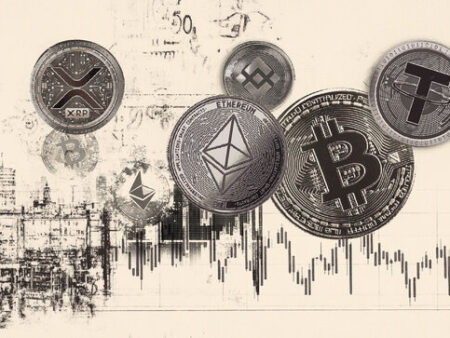Tron (TRX) Poised for Potential Bullish Surge Amidst Blockchain Growth
Tron (TRX) is showing signs of a potential upward trend, consolidating between the $0.2704 support level and the $0.2751 resistance. A technical buy signal on the 4-hour chart reflects increased activity on the Tron blockchain, with transactions nearly doubling since 2023.
Tron’s Robust Blockchain Fuels Optimism
The number of transactions on the Tron blockchain is approaching nine million, almost double the five million recorded in September 2023. According to Tron’s transaction count metric on a 30-day moving average (MA), the steady increase in transactions has positively impacted TRX’s price, which was around $0.07 in September 2023.
Average gas fees on the Tron blockchain have steadily decreased from approximately 2.72 TRX in September 2023 to about 0.79 TRX in June, according to data from IntoTheBlock.
“Given that gas fees are paid in TRX, the consistent growth in transaction volume, combined with the slightly higher fees now being paid in TRX, is creating a positive impact on TRX’s price action, driven by functional demand,” an analyst stated via CryptoQuant.
The combination of low transaction fees, increased transaction throughput, speed, and network security has positioned Tron as the preferred platform for the stablecoin USDT.
USDT supply on the Tron blockchain reached a new all-time high, exceeding $80 billion on June 23. Since January, USDT on Tron has added over $20 billion in new supply, highlighting the protocol’s role in stablecoin transfers and adoption.
Technical Outlook: Key Buy Signals Emerge
Tron’s TRX is attempting a breakout above the short-term 100-period exponential moving average (EMA), currently at $0.2730 on the 4-hour chart. Traders appear to have adopted a positive risk sentiment heading into the weekend, supported by a buy signal triggered by the SuperTrend indicator.
This signal has been active since Tuesday, leading traders to seek exposure to TRX, increasing demand and creating a tailwind that could potentially push the price above the upper consolidation limit at $0.2751.
The Relative Strength Index (RSI), currently slightly above the midline, suggests mild bullish momentum. Its continued movement into overbought territory could solidify the bulls’ positive influence on the price, potentially propelling TRX above the range limit resistance at $0.2751.
Other key levels of interest for traders are at $0.2835, last tested on June 16, and $0.2946, last probed on June 10. A 5% drop towards the most recent low of $0.2590 cannot be ruled out and will likely depend on market sentiment and dynamics in the broader cryptocurrency industry.
Cryptocurrency Metrics FAQs
What Determines the Total Number of Cryptocurrency Tokens?
The developer or creator of each cryptocurrency decides the total number of tokens that can be minted or issued. Only a certain number of these assets can be minted through mining, staking, or other mechanisms. This is defined by the algorithm of the underlying blockchain technology. Since its creation, a total of 19,445,656 BTC have been minted, which is the circulating supply of Bitcoin. On the other hand, the circulating supply can also decrease through actions such as token burning or mistakenly sending assets to addresses of other incompatible blockchains.
How is Market Capitalization Calculated?
Market capitalization is the result of multiplying the circulating supply of a particular asset by its current market value. In the case of Bitcoin, the market capitalization in early August 2023 exceeds $570 billion, which is the result of the more than 19 million BTC in circulation multiplied by the price of Bitcoin, which is around $29,600.
What Does Trading Volume Indicate?
Trading volume refers to the total number of tokens of a specific asset that have been traded or exchanged between buyers and sellers within a set trading schedule, for example, 24 hours. Used to measure market sentiment, this metric combines all volumes from centralized and decentralized exchanges. Increased trading volume often denotes demand for a particular asset, as more people are buying and selling the cryptocurrency.
What is the Funding Rate?
The funding rate is a concept designed to encourage traders to take positions and ensure that the prices of perpetual contracts match those of spot markets. It defines a mechanism for exchanges to ensure that future prices and periodic price payments converge regularly. When the funding rate is positive, the price of the perpetual contract is higher than the market price. This means that traders who are bullish and have opened long positions pay traders who are in short positions. Conversely, a negative funding rate means that perpetual contract prices are lower than the reference price, so traders with short positions pay traders who have opened long positions.
Stay ahead of the curve in the fast-paced crypto world – explore the latest updates and trends at Cryptonewsfeeds.com.










